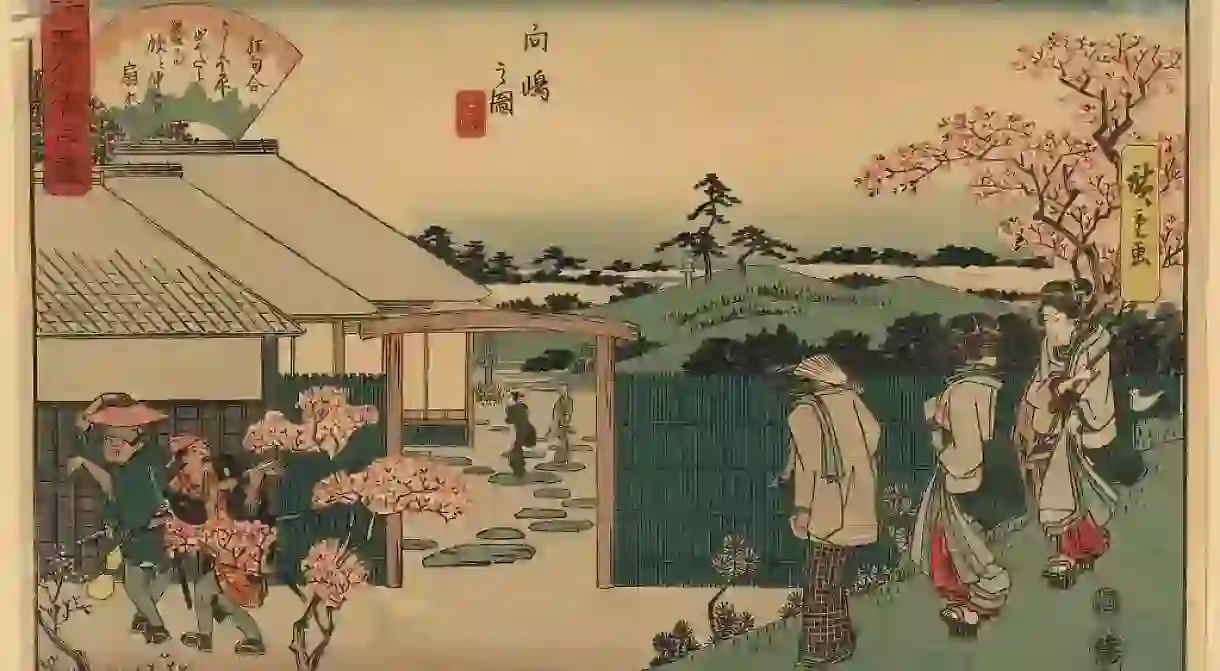These Historical Japanese Prints Depict Japan’s Most Sacred Spots

The traditional Japanese woodblock prints known as ukiyo-e are known for their depiction of the ‘Floating World’, referring to the fleeting world of pleasure that included court beauties, romantic depictions of nature, and even erotica. But they also depict some of the most sacred sites in Japan – both man-made and natural – from Shinto shrines to the mother of all power spots, Mount Fuji. Here are eight of Japan’s most sacred spots depicted in historical prints from the 18th to early 20th centuries.
Ise Grand Shrine
This late 18th-century woodcut offers a perspective of the Daidai Kagura, a Shinto dance with music, taking place at Ise Jingu, Japan’s most sacred Shinto shrine.

Itsukushima Shrine
Itsukushima Shrine is located on the island of Miyajima in Hiroshima prefecture. The shrine’s floating torii gate is the only one of its kind in Japan and considered one of the country’s most scenic views.

Lake Biwa
This woodcut by Katsushika Hokusai depicts a rainy nighttime view of Lake Biwa, Japan’s largest lake, and the ancient Karasaki pine trees located there. The entire lake is considered to be a power spot, with the strongest source concentrated at Chikubu Island in the northern part of the lake.

Izumo Grand Shrine
This Shinto shrine in Shimane prefecture is believed to be the oldest in Japan. According to ancient folklore, all of the kami, or Japanese gods, convene at Izumo Grand Shrine for a sacred gathering once a year. They are illustrated in their human forms in the print below by Sadahide.

Amanohashidate
Amanohashidate, a sandbar in northern Kyoto prefecture, is another one of the most celebrated scenic views of Japan. The Shinto shrine located on the sandbar is considered a power spot for success in love.

Hase-dera Temple
This piece portrays Nara prefecture’s Hase-dera Temple in springtime when the cherry blossoms are at peak bloom. One of the most sacred Buddhist temples of the Nara-Yamato Pilgrimage, it’s not to be confused with Hase-dera Temple in Kamakura, which shares the same name.

Mount Fuji
There are many famous historical prints of Mount Fuji, but this one by Uehara Konen was created in the Meiji era, during a period of rapid changes to Japanese society that led to the steady disappearance of the woodblock print.

Shinkyo, The Sacred Bridge
This woodblock print depicts a rainstorm falling on Shinkyo, or ‘The Sacred Bridge’, which leads to Nikkō Futarasan Shrine.














